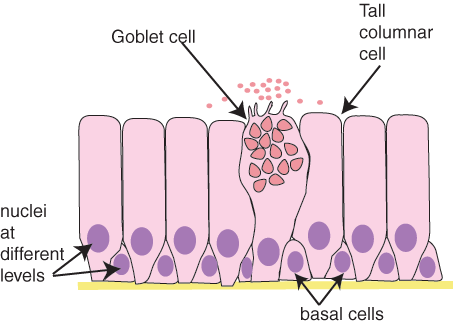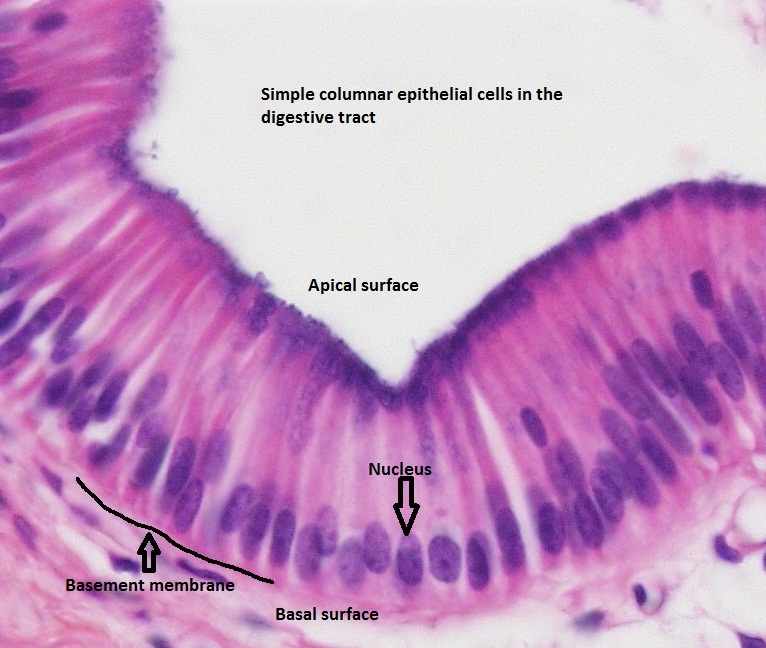Organisation of cells animal tissues
| Philosophy of Science |
While creating a resource page, please click here for a resource creation checklist
Concept Map
Error: Mind Map file Animal tissues.mm not found
Textbook
Additional information
Useful websites
Reference Books
NCERT Textbook Chapter Tissues
Teaching Outlines
Concept #1 Animal tissues-Epithelial tissue
Learning objectives
- Epithelial tissue perform the function of protection.
- Epithelium covers most organs and cavities within the body.
Notes for teachers
Blood and muscles are both examples of tissues found in our body. On the basis of the functions they perform we can think of four different types of animal tissues, such as epithelial tissue, connective tissue, muscular tissue and nervous tissue. Blood is a type of connective tissue, and muscle forms muscular tissue.
EPITHELIAL TISSUE
The skin, the lining of the mouth, the lining of blood vessels, lung alveoli and kidney tubules are all made ofepithelial tissue. Epithelial tissue cells are
tightly packed without intercellular spaces and form a continuous sheet.
Epithelial tissue is classified into 3types-Squamous epithelium, Columnar epithelium and Cuboidal epithelium.
Squamous epithelium
In cells lining blood vessels or lung alveoli, where transportation of substances occurs through a selectively permeable surface, there is a simple flat kind of epithelium. This is called the simple squamous epithelium. Simple squamous epithelial cells are extremely thin and flat and form a delicate lining.The oesophagus and the lining of the mouth are also covered with squamous epithelium. The skin, which protects the body, is also made of squamous epithelium. Skin epithelial cells are arranged in many layers to prevent wear and tear. Since they are arranged in a pattern of layers,the epithelium is called stratified squamous epithelium.
 Simple squamous epithelium
Simple squamous epithelium
Where absorption and secretion occur, as in the inner lining of the intestine, tall epithelial cells are present called columnar epithelium. This columnar (meaning ‘pillar-like’) epithelium facilitates movement across the epithelial barrier. In the respiratory tract, the columnar epithelial tissue also has cilia, which are hair-like projections on the outer surfaces of epithelial cells. These cilia can move, and their movement pushes the mucus forward to clear it. This type of epithelium is thus ciliated columnar epithelium.
 Simple columnar cells
Simple columnar cells
 Simple columnar cells in the digestive tract
Simple columnar cells in the digestive tract
 ciliated columnar epithelium
ciliated columnar epithelium
Epithelium consisting of cube shaped cells is known as cuboidal epithelium.They form the lining for many ducts such as pancreatic duct, salivary duct and sweat ducts. Epithelial cells often acquire additional specialisation as gland cells, which can secrete substances at the epithelial surface. Sometimes a portion of the epithelial tissue folds inward, and a multicellular gland is formed. This is glandular epithelium.

 Cuboidal epithelium
Cuboidal epithelium
Activities
- Activity No #1Epithelial_tissue
- Activity No #2Epithelial_tissue
Concept #2
Learning objectives
Notes for teachers
Activities
- Activity No #1 page_name_concept_name_activity1
- Activity No #2 page_name_concept_name_activity2
Concept #3
Learning objectives
Notes for teachers
Activities
- Activity No #1 page_name_concept_name_activity1
- Activity No #2 page_name_concept_name_activity2
Concept #4
Learning objectives
Notes for teachers
Activities
- Activity No #1 page_name_concept_name_activity1
- Activity No #2 page_name_concept_name_activity2